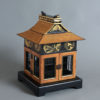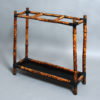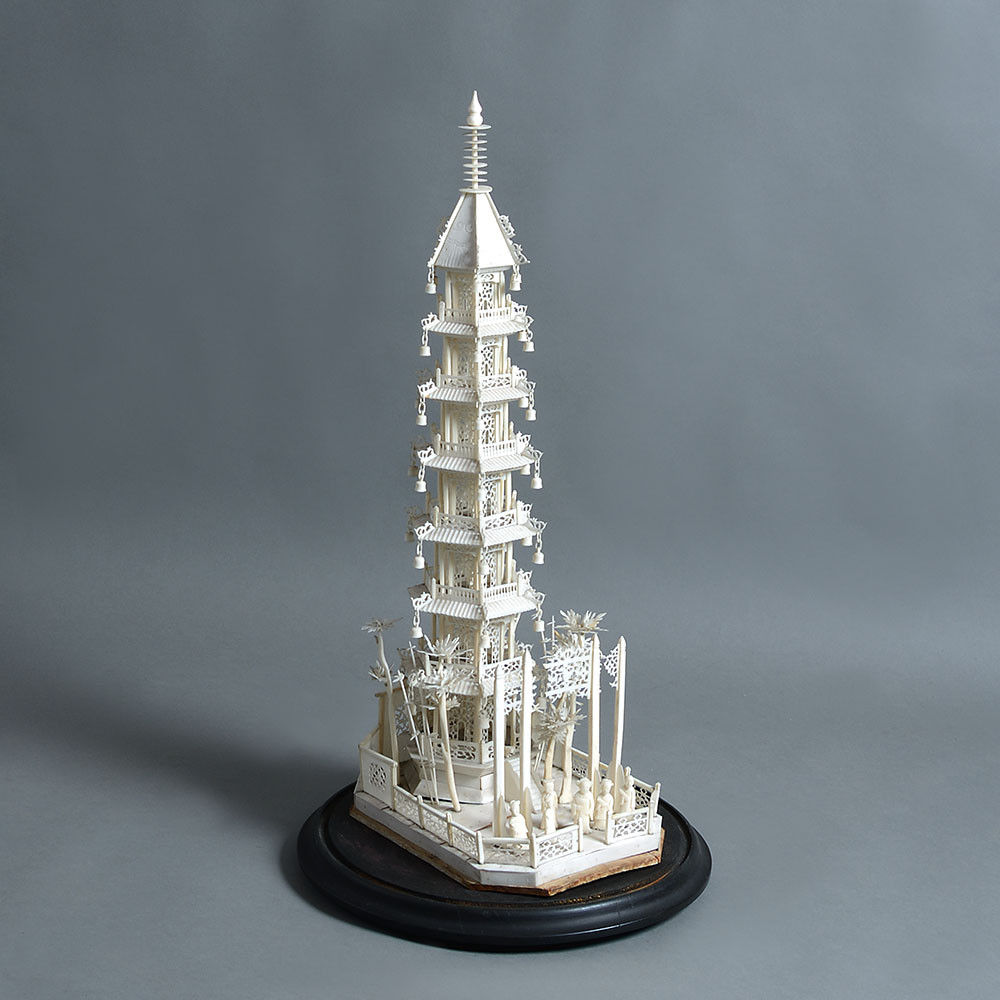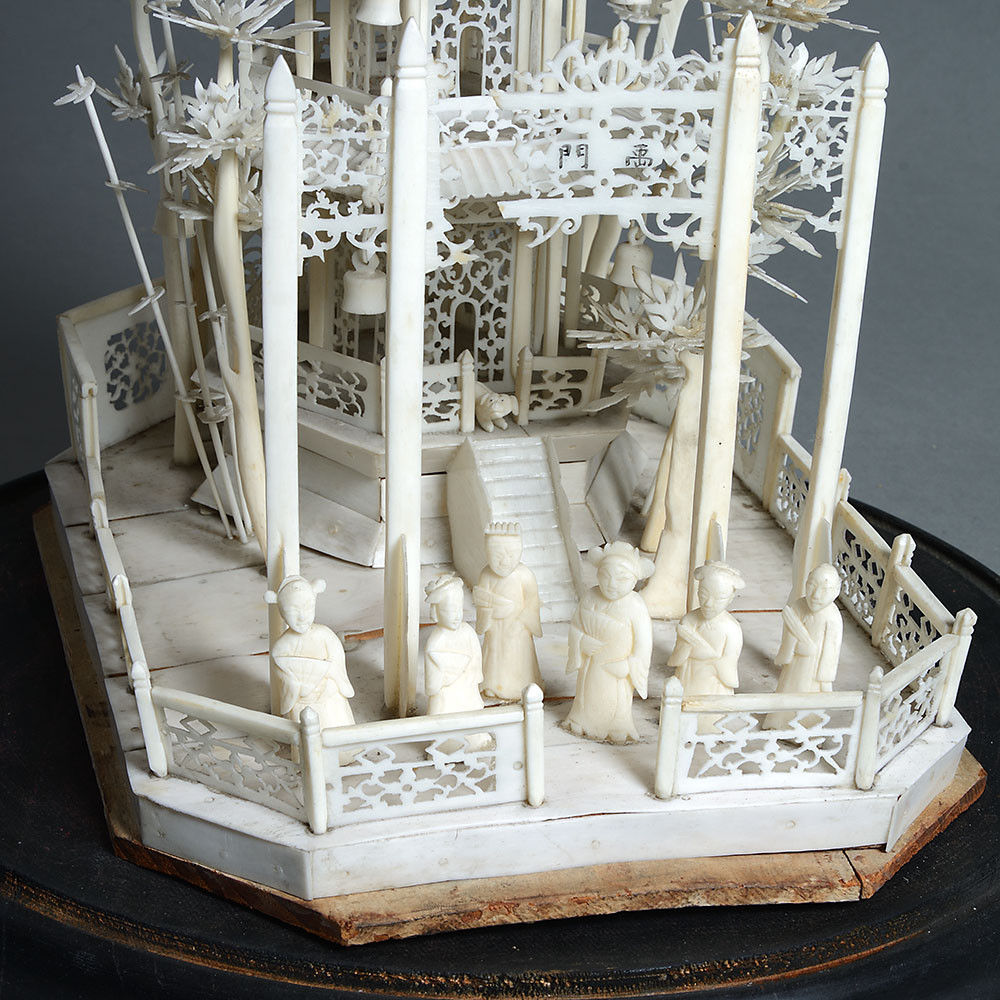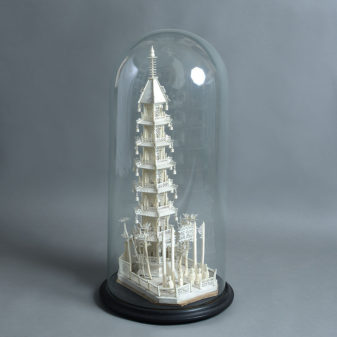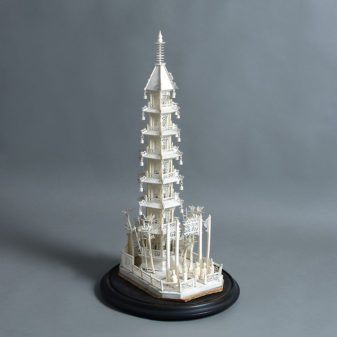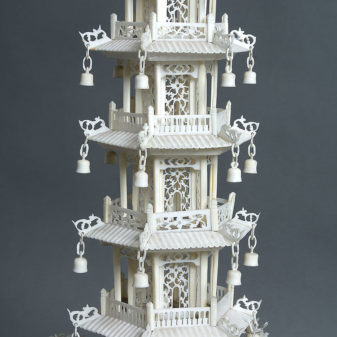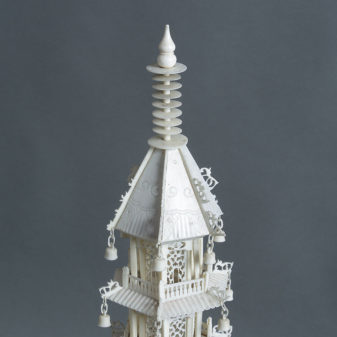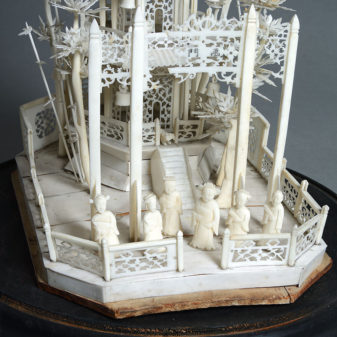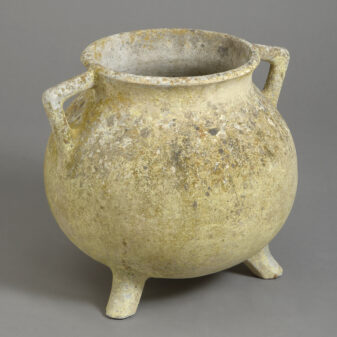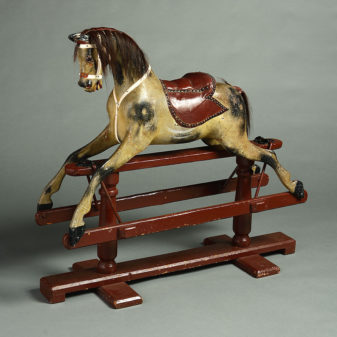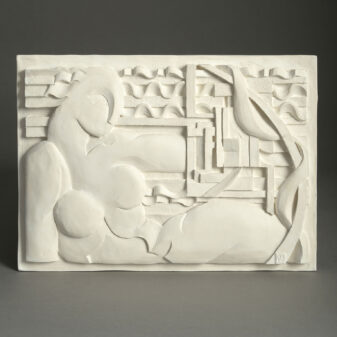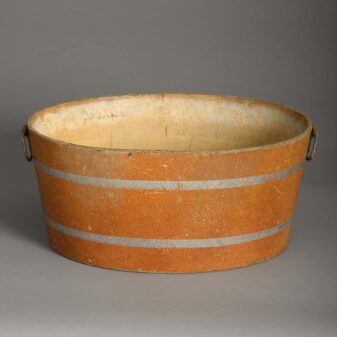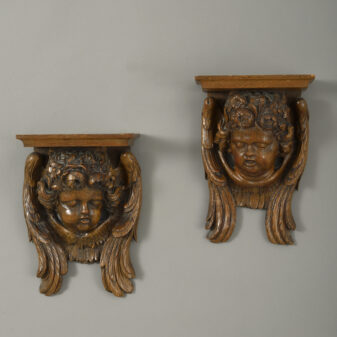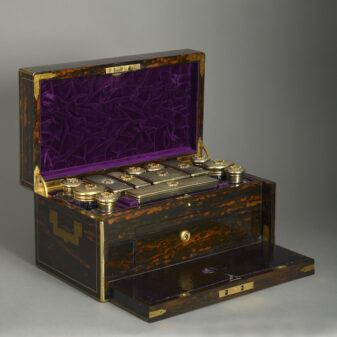Circa 1860 China
A Mid-19th Century Carved Bone Pagoda
£2,500
SOLD
Height 25 inches (63 1/2 cm)
Width 8 inches (20.32 cm)
Depth 10 1/2 inches (26.67 cm)
A finely carved bone pagoda of good scale, comprising seven tiers, each with lattice work windows, balustrades, hanging bells and figures supported on a chamfered rectangular base with trees and courtiers within a fretwork garden fence.
Generally speaking, the pagoda is a tall building with gradually tiered eaves. Although it seemed to have originated in India, constructed as a memorial for sacred relics, it it now largely associated with Chinese and Japanese culture. The first Chinese pagoda was recorded in the 3rd century. Since it is closely affiliated with the traditional Buddhist temple, one can trace the spreading of Buddhism in China by the increasing numbers of pagodas. A noteworthy fact is that, due to their height, they attract lightning, which could be one of the reasons why they are deemed as ‘spiritually charged’.
Together with a Victorian domed glass display case and ebonised circular plinth.
Dimensions refer to height of pagoda.
Dimensions of dome: height 28 inches (71 cm)
Diameter of base: 13.75 inches (35 cm)

